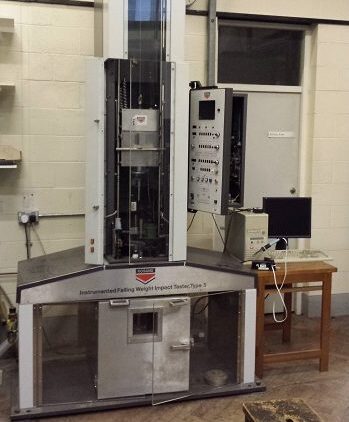Sample Characterisation

Ultrasonic Velocity Apparatus
The main advantage of the technique is that it allows a full set of elastic constants of a material (Young's Modulus, Poissons Ratio and Shear Modulus) to be quickly and accurately measured, and by this virtue it has been used extensively at Leeds for the development of modelling schemes for composites. The sample to be tested is placed in a water bath between an ultrasonic transmitter and receiver (2.25MHz), enabling the velocity of sound in the sample to be measured. The unique aspect of the technique is that at non-zero incidence, mode conversion at the front face of the sample causes the incident longitudinal wave to be split into a longitudinal wave and a shear wave inside the sample. Measuring the velocities of these two waves allows the stiffness constants in the plane of propagation to be determined. By propagating sound in different planes it is possible to obtain all the elastic constants of a material (up to nine elastic constants if the material is anisotropic).
Image Analysis System
An in-house designed facility, developed as a collaboration between the IRC and The Instrumentation Group in the physics department. It is used to characterise the microstructure of fibre reinforced polymer composites, in particular their three dimensional fibre orientation distribution. The system works by looking at transverse sections taken from a composite, and analyses the elliptical footprint that each fibre makes with the section plane. The method is very fast, able to analyse up to 40,000 fibre images/hour, and can automatically scan large areas, up to 20mm x 20mm square. In addition to determining fibre orientation, the system can also be used to determine fibre volume fraction, and using different samples, the fibre length distribution.
Rosand Instrumented Falling Weight Impact Machine
This machine can be used for a range of impact tests. Tests that be carried out include Charpy and Izod impact geometries (ASTM D256) and clamped plate. The maximum impact velocity is 6m/s and for a maximum weight of 25kg, equates to a maximum impact energy of 450J. Tests can be carried out in an environmental chamber, allowing a temperature range of -100 to +200C to be studied.
If more information is required about use of the composites lab then please contact Dr Peter Hine for details.
